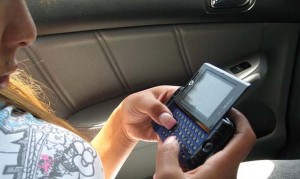
Texting and cellphoning may be responsible for a big increase in the percentage of nighttime fatalities involving teen drivers.
Driving after dark always has its risks, but a new study finds that the number of nighttime fatalities involving teenage drivers has risen well beyond that of the rest of the population, and cellphones are the likely cause.
The number of fatal crashes in the U.S. has gone down sharply, over the past decade, but there was an increase in the percentage of such accidents occuring after dark.
The percentage of deadly nighttime crashes involving drivers 16 to 19 years old increased sharply between 1999 and 2008, according to research by the Texas Transportation Institute. During the first year of the study, there were 6,368 fatal crashes involving those teen driver, 2,875, or 45 percent, of them at night. By 2008, the overall number of fatal crashes involving drivers 16 to 19 actually fell, to 4,322, but those occurring after dark increased to 50%, or 2,148 overall.
That works out to a 10% increase while, by comparison, there was only an 8% increase among drivers 20 and older, the TTI found.
The Institute suggests that alcohol use is likely to blame for the problem among drivers over 20, but it points the finger at cellphones – both for talking and texting — for the rising nighttime fatality rate among teens.
“We know driving at night is dangerous. We know using a cellphone behind the wheel compromises your ability to drive,” said Bernie Fette, senior research specialist for the Texas Transportation Institute. “Put those together and you’ve created a perfect storm.”
Overall, there was an 11% decline in crash fatalities in the U.S. between 1999 and 2008, based on data gathered by the National Highway Traffic Safety Administration’ Fatality Analysis Reporting System, or FARS.
Separate data from the Pew Research Center shows cellphone use among teens has grown 58% since 2004. During the same period, more than half of all teen drivers say they have made a call from behind the wheel while one in three have sent text messages.
While there continues to be a debate about the effectiveness of banning the use of cellphones while driving – a recent study by the Insurance Institute for Highway Safety found no significant change in accident rates in states that have barred calls using handheld devices – there’s stronger evidence to support banning texting from behind the wheel, as Michigan recently did.
Meanwhile, a number of states have either limited the use of cellphones by young drivers or are studying such legislation. The new study is likely to encourage the passage of more such measures.
